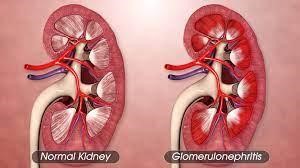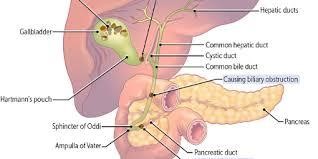A client with glomerulonephritis is preparing for discharge and asks the nurse which kind of diet to follow upon returning home. Which dietary teaching should the nurse include in the discharge instructions?
Follow low carbohydrate diet with low glycaemic index foods.
Eat a high protein diet three times a day.
Avoid foods high in potassium.
Restrict sodium rich foods and excessive oral fluids.
The Correct Answer is C
Choice A
Following low carbohydrate diet with low glycaemic index foods is incorrect. This recommendation is not specifically related to the management of glomerulonephritis. While managing carbohydrate intake might be relevant for individuals with diabetes, it's not the primary focus for someone with kidney inflammation.
Choice B
Eating a high protein diet three times a day is incorrect: While protein is important for overall health and recovery, a high protein diet might not be the best recommendation for someone with compromised kidney function. Excessive protein intake could potentially put additional strain on the kidneys.
Choice C
Avoiding foods high in potassium is correct. Examples of foods high in potassium that the client should be cautious about include bananas, oranges, potatoes, tomatoes, spinach, and other fruits and vegetables. Glomerulonephritis is a condition involving inflammation of the glomeruli in the kidneys, which can affect kidney function and the regulation of electrolytes, including potassium. In glomerulonephritis, the kidneys might have difficulty filtering and excreting excess potassium, leading to a potential build-up of potassium in the blood (hyperkalaemia).
Choice D
Restricting sodium rich foods and excessive oral fluids is incorrect. This recommendation aligns more closely with managing fluid retention and blood pressure, which can be relevant for individuals with kidney issues. However, the primary concern in glomerulonephritis is often potassium balance, making the recommendation to avoid high potassium foods more pertinent.

Nursing Test Bank
Naxlex Comprehensive Predictor Exams
Related Questions
Correct Answer is C
Explanation
Choice A
Opened package of hot dogs is not correct. Hot dogs are processed and often contain preservatives that help extend their shelf life. However, it's still important to follow proper storage guidelines to ensure their safety.
Choice B
Packaged of uncooked lamb chops is not correct. Uncooked meats are generally safe if stored properly. The main concern arises when cooking and handling them, as raw meats can potentially cross-contaminate other foods if proper sanitation measures are not followed.
Choice C
Opened package of deli sliced meat is correct. Among the options provided, an opened package of deli sliced meats (option C) is most likely to pose a threat of food poisoning after being stored in a refrigerator at 40°F (4.4°C) or below for more than two days.
Deli sliced meats are considered a high-risk food for bacterial growth and foodborne illnesses. When meats are sliced and exposed to air, they have a larger surface area, making them more susceptible to bacterial contamination. While the refrigerator temperature of 40°F (4.4°C) helps slow down bacterial growth, it doesn't completely prevent it, especially if the food has been stored for an extended period of time.
Choice D
Ground-up hamburger raw meat is not correct. Similar to uncooked lamb chops, raw ground meat is generally safe when stored properly and handled with care. However, ground meats do have a larger surface area that can allow bacteria to grow more easily, which is why safe cooking practices are important.
Correct Answer is C
Explanation
Choice A
Beef broth should not be omitted. Generally, clear broths like beef broth are lower in fat and may be a better choice for someone with cholelithiasis compared to creamy or fatty foods.
Choice B
Ketchup should not be omitted. Ketchup is not typically high in fat and may not be a significant concern for someone with cholelithiasis.
Choice C
Ice cream should be omitted. Cholelithiasis refers to the presence of gallstones in the gallbladder. Gallstones can form from substances in the bile, and certain foods can trigger symptoms in individuals with gallbladder issues. One of the common triggers is high-fat foods, which can cause the gallbladder to contract and potentially lead to pain or discomfort.
Choice D
Bread should not be omitted. While bread contains some fat, it's not as high in fat as ice cream. The focus for individuals with cholelithiasis is often on high-fat foods rather than moderate-fat foods like bread.

Whether you are a student looking to ace your exams or a practicing nurse seeking to enhance your expertise , our nursing education contents will empower you with the confidence and competence to make a difference in the lives of patients and become a respected leader in the healthcare field.
Visit Naxlex, invest in your future and unlock endless possibilities with our unparalleled nursing education contents today
Report Wrong Answer on the Current Question
Do you disagree with the answer? If yes, what is your expected answer? Explain.
Kindly be descriptive with the issue you are facing.
